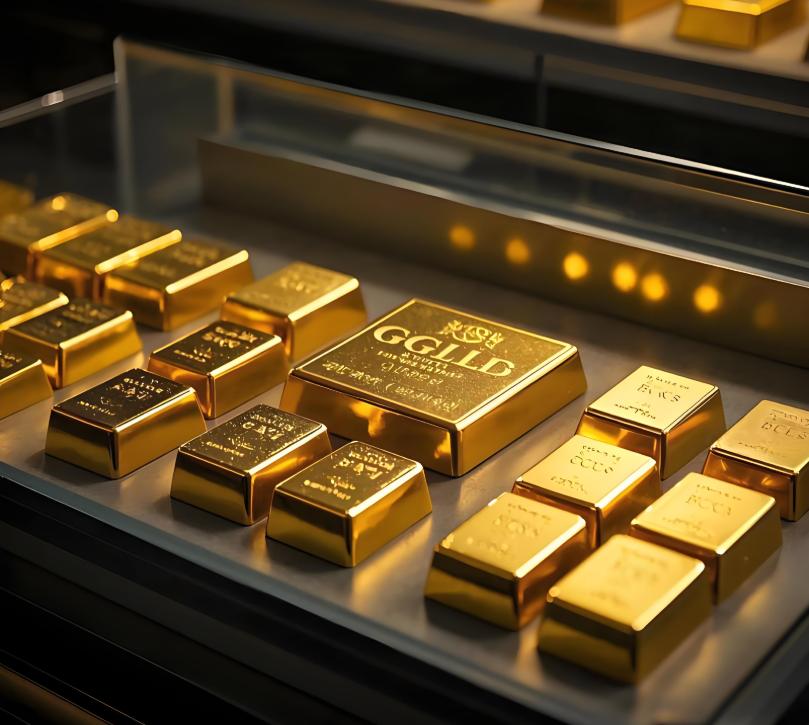
On October 14th local time, the spot gold price surged by nearly $15 in a short period, reaching $4,160 per ounce for the first time. It once again set a new historical high, with a cumulative increase of over $1,500 this year. As of 11:41, the spot gold price was reported at $4,162.12 per ounce, with a day-to-day increase of 1.28%. The COMEX gold futures price was reported at $4,172.1 per ounce, with a day-to-day increase of 0.95%.
The phenomenon of the spot gold price skyrocketing has had a wide and profound impact on the financial sector. Firstly, it affects market sentiment and the flow of funds. The spot gold price breaking through $4,160 reflects the market's concern about global economic uncertainties. Factors such as the US government shutdown, geopolitical conflicts (such as the Israel-Palestine conflict and the situation in Ukraine), and the escalation of Sino-US trade frictions have jointly pushed up the demand for safe-haven assets. Funds accelerate their flow from risky assets (such as stocks and bonds) to gold, driving the price of gold to continue rising. The holdings of gold ETFs have reached a new high, and the active participation of institutional investors and algorithmic trading have triggered a large number of short positions and squeeze-out situations after the price of gold broke through the key technical level of $4,000. This formed a positive cycle of supply and demand fundamentals and capital flows. Although the long-term bullish trend remains unchanged, the overbought short-term technical indicators may lead to increased price volatility. Some institutional investors have begun to be cautious about the risk of a correction, and the "fear of missing out" mentality of retail investors has intensified buying, further pushing up the gold price, creating a market sentiment divergence.
Secondly, it affects monetary policy and the interest rate environment. The market predicts that the probability of the US Federal Reserve cutting interest rates in October is over 98%, and the probability of cutting rates in December is 100%. The low interest rate environment reduces the holding cost of non-yielding assets such as gold, enhancing its attractiveness. The expectation of a downward movement in real interest rates is significant, weakening the opportunity cost of holding gold, creating a favorable monetary environment for the rise in gold prices. The US dollar index has fallen by nearly 9% since the beginning of the year. The weakening of the US dollar makes gold priced in US dollars more attractive to non-US dollar investors. The global debt scale has risen to a historical peak of 337.7 trillion US dollars, and the US credit system has shown a weakening trend. Many central banks have accelerated the process of "de-dollarization", further strengthening the status of gold as a reserve asset.
Thirdly, it affects the allocation of financial assets. As a safe-haven asset and inflation hedge tool, gold highlights its value in a low-interest-rate and high-risk environment. Investors, in the face of global economic uncertainties and the dovish outlook of the US Federal Reserve, have turned to safe assets. Gold becomes the preferred choice. Adding a certain proportion of gold to the investment portfolio can reduce the risk of the entire investment portfolio. When the stock market declines, the price of gold may rise, thereby offsetting some losses. The new high of gold has driven the prices of other precious metals to soar. The price of silver broke through $53 per ounce, setting a record since 1980. The New York Mercantile Exchange silver futures rose by 6.8% in a single day, and the spot silver price broke through the $52 threshold. The rise is not only driven by the risk-averse sentiment but also benefits from the structural demand growth in areas such as electric vehicles and solar panels.
Fourthly, it has an impact on the global economy. Global uncertainties are gradually increasing, further enhancing the hedge value of gold. Geopolitical risks have erupted in a concentrated manner, such as the Israel-Palestine conflict although it has come to an end for the time being, the fundamental problems remain unresolved. The US government shutdown has lasted for more than two weeks. Coupled with the repeated Sino-US trade frictions and the political turmoil in France, multiple uncertainties have prompted a continuous inflow of funds into gold.
In conclusion, the spot gold price breaking through the key node of $4,160 is like a huge stone thrown into a lake, causing waves. This breakthrough is not only an important leap for the gold market itself but also a vivid portrayal of the increasing complexity and uncertainty of the global financial system, adding more variables and challenges to the future direction of the financial market.

According to Yahoo US media reports, the recent remarks of Federal Reserve Chair Jerome Powell have drawn deep concern from the market about the health of the US labor market.
According to Yahoo US media reports, the recent remarks of …
After 11 years of waiting in the deep sea, we finally have …
On December 17, 2025, the newly renovated American "Preside…
Nike's second-quarter revenue reached 12.4 billion US dolla…
The European Union (EU) recently announced sanctions agains…
In December 2025, the U.S. economy and financial markets ex…